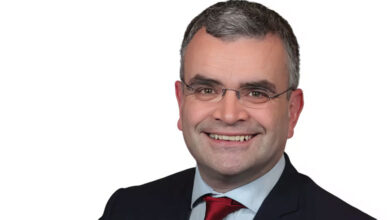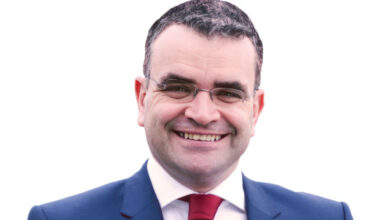Chartered director programme elevates Ireland’s C-suite

IoD Ireland’s gold-standard director programme equips leaders for today’s governance challenges.
Strong, empowered leadership is an essential component during times of great economic change, and for both national and multinational businesses operating in Ireland, the need for knowledgeable and effective leaders is more urgent than ever.
“Effective leadership is at the heart of every successful organisation,” says Caroline Spillane, chief executive officer of the Institute of Directors (IoD) Ireland. “The role of a director or senior executive is ever-evolving, requiring a blend of strategic vision, strong governance, and technical expertise.”
IoD Ireland is forging a path towards leadership excellence through its Chartered Director Programme. This is the gold standard in director education, and is delivered by one of Ireland’s most respected authorities on governance and leadership.
Spillane adds: “Its blend of practical application, expert teaching and professional recognition makes the Chartered Director Programme a must-have for directors and business leaders who are committed to governance excellence and are ambitious for their businesses.”
Programme structure and USP
The Chartered Director Programme offers an innovative blend of peer-to-peer learning, academic education and real-world insights with participants from diverse industries and experiences. It is led by a faculty of governance specialists and chartered directors.
Programme Director Eileen Gleeson reflects that one of the distinguishing features of this course is its focus on small in-person class sizes, which fosters a collaborative learning environment where participants can engage deeply with the material and with one another.
“The breadth and scope of participants is impressive – spanning SMEs, large corporations, multinationals, NGOs, charities and state bodies,” she said. “These varied sectors bring different perspectives and experiences, enriching the learning experience and creating networks that last a lifetime. The programme is suitable for those in leadership positions within their organisations as well as those who are in non-executive roles or are transitioning into a non-executive career.
“Upon completing the programme, participants join an alumni community that continues to provide professional development opportunities and networking long after the programme ends. Their IoD membership and alumni community ensure they are supported throughout the rest of their executive and non-executive careers.”
Real-world impact
The true value of the Chartered Director Programme lies in the experiences and successes of those who have completed it. For Margot Slattery, global head of diversity and inclusion at ISS A/S, the programme offered both structure and support, making it manageable alongside a full-time role. She found it to be a transformative experience, leaving her “much better prepared for the future”.
Fiona Flannery, an independent non-executive director and financial services expert, emphasises its practicality, noting that while it sharpened her technical skills, it also equipped her with a “great toolkit to encourage meaningful boardroom debate and challenge.” The programme reinforced the importance of fiduciary duties, instilling a deep sense of responsibility in her board engagements.
A must have for directors and business leaders
For Peter Oakes, fintech leader and INED, the benefits extended beyond education thanks to its invaluable networking opportunities. The Institute of Directors, he says, offered “high-quality events and access to a peer network that is incredibly useful for staying at the forefront of governance trends”.
Derek Kehoe, chief executive and head of country at BNP Paribas Ireland, experienced the programme as a pivotal confidence booster early in his board career. Shortly after stepping into the role of chief executive and joining multiple boards, he found that becoming a chartered director “gave [him] huge confidence at the board table”, particularly as a chairman.
Comprehensive syllabus
The Chartered Director Programme covers a broad range of competencies essential for effective directorship and leadership. Subjects include the role of the director and the board from an Irish and international perspective; the principles and practices that ensure ethical and effective leadership; strategic development – learning to guide organisations through both internal and external challenges; financial oversight and decision making; and leadership in management and boards – cultivating leadership skills for managing teams and steering boards towards success.
Upon successful completion of the programme, the participant is awarded a certificate and diploma in Company Direction, and then may be eligible to pursue the prestigious Chartered Director accreditation.
As the only organisation in Ireland to offer full Chartered Director designation, IoD Ireland is uniquely positioned to help shape the future of corporate governance and leadership.
“The IoD Chartered Director Programme was a very professional, enriching and personally rewarding experience,” says Luke Hanlon, managing director of Supervalu and Centra. “The material covered was excellent, spanning leadership, governance, strategy and company finance. The programme was curated and organised in a really accessible way, which I found particularly helpful as I am in a full-time executive role.”
Spillane concludes that, “by participating in the Chartered Director Programme, directors and senior executives can position themselves at the forefront of leadership excellence. Equipped with the skills, knowledge and network necessary for guiding their organisations toward sustainable success, graduates of the programme are ready to take on today’s governance challenges.
“IoD Ireland remains committed to shaping the future of leadership in Ireland, empowering its vision of making the country an exemplar in corporate governance.”
The IoD Chartered Director Programme. Enrolling now for September 2025. Learn more: www.iodireland.ie







